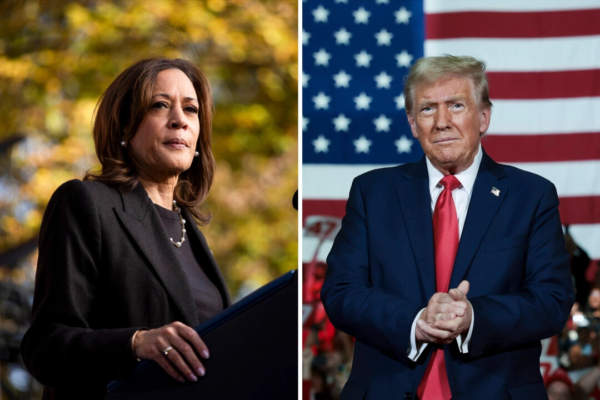Two weeks away from the US presidential election, according to the latest data from RealClearPolitics, Harris maintains a slight lead nationwide, but as the election enters its final stages, enthusiasm among voters seems to be waning. Meanwhile, both Trump and Harris are closing the gap in support in seven key swing states, making the competition fiercer.
Experts widely predict that these seven key states will be crucial battlegrounds in November.
Shortly after Biden dropped out of the presidential race, Harris became the Democratic nominee in July. Her poll numbers surged from late July to August, steadily increasing in the key swing states. However, polling experts note that Harris’s support has plateaued for a while, suggesting that she may have solidified her core base.
Democratic strategist Theryn Bond pointed out that Harris needs to overcome some obstacles and challenges to attract more voter support, as her message in the campaign lacks clear distinctions from Biden’s policies.
Bond stated that the “new” in Harris’s campaign slogan “New Way Forward” implies being different, so she needs to articulate how she will stand out to the voters.
As early voting begins in various states, many voters are still undecided about supporting Harris and are looking for her to present clear and specific policies to stand out in this race. Bond said, “At this point, I don’t know what else she can do besides answering questions clearly.”
During an interview on “The View” on October 8, when asked if she would do things differently from Biden in the past four years, Harris responded, “I’ve never thought about it that way.”
In the two days following Biden’s withdrawal, her initial support was at 45.9%, trailing Trump by nearly 2%.
By August, Harris surpassed Trump in national and swing state polls. She led Trump by 2.2% in a national poll on September 22, reaching a peak. In a swing state poll on August 29, she led Trump by 0.5%.
As of October 22, although Harris holds a 0.8% lead over Trump, her support has stagnated since the end of September.
On the other hand, Trump’s support has seen a rebound in the final two weeks before the election.
Republican strategist Ford O’Connell told a news outlet that “these poll results mark Trump’s best numbers in three presidential runs.”
In 2016, Trump trailed Hillary Clinton by 7 percentage points in national polls in the two weeks leading up to the election, while in 2020, he trailed Biden by 9 percentage points.
O’Connell predicts that for Trump to win the election, his most effective strategy would be to secure victories in North Carolina, Georgia, and Pennsylvania.
According to the average data from RealClearPolitics as of October 22, Trump is leading in all swing states. His support in Georgia is ahead by 2.5 percentage points. In Arizona (1.8%) and Michigan (1.2%), he is leading by at least 1 percentage point. Meanwhile, Trump also maintains a slight lead in Pennsylvania (0.8%), Nevada (0.7%), North Carolina (0.5%), and Wisconsin (0.4%).
Progressive American political commentator Cenk Uygur believes that since Harris has shifted her stance on important political issues, she has begun to lose voter support.
“At first, she did incredibly well,” Uygur noted in an interview, attributing Harris’s strong start to the choice of Minnesota Governor Tim Walz as her running mate and her presentation of an “economic populist agenda.”
“Then she pivoted and started supporting business, war, and Israel heavily, which hurt her,” he said.
Uygur suggested that Harris should focus on refining her message, especially on economic issues and her plans for ordinary Americans, rather than discussing “social issues that divide the country.”
These economic issues can appeal more to potential middle-of-the-road voters in critical swing states.
According to a recent poll from The Washington Post and Schar School, 37% of registered voters “definitely” support Trump, while another 37% “definitely” support Harris. 10% of voters say they “might” vote for Trump or Harris. An additional 6% of voters either say “neither” or have no opinion.
In these crucial undecided states, these swing voters who have not yet chosen a side could become a key factor in influencing the election outcome.

